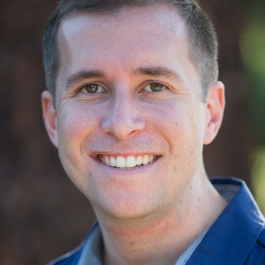Sheila Frugé knows that long tenures in the tech industry are very rare.
So when she joined Consensus Cloud Solutions and met numerous team members who had worked at the company for five, 10 and over 15 years in some cases, she wanted to know what set these individuals apart.
“I’ve learned that many of them are highly resilient, care deeply about others and have embraced a lot of change and uncertainty,” Frugé said. “I deeply respect that.”
As an account-based marketing director, it’s key for her to understand how employees work — and work together. Because without strong cross-functional collaboration, leaders like Frugé cannot guide their teams to long-term success.
Director of Engineering Jason Kemp has also mastered the art of fostering tight-knit teamwork during his time at Consensus. He explained that, while it can be easy for leaders to stay in a silo and avoid the complexity of continuous problem-solving, he has learned how important it is to step outside of his comfort zone.
“Giving in to any of these temptations will not bring about mission success,” Kemp said.
For Frugé and Kemp, navigating the nuances of cross-functional collaboration requires understanding team members’ unique experiences and implementing practices that bridge the gaps between expertise and action — all while embracing continuous change.
ABOUT CONSENSUS CLOUD SOLUTIONS
Focusing on the healthcare space, Consensus Cloud Solutions provides digital solutions like enterprise-level fax technology, clinical documentation software and API connectivity software.
Building a Strong Foundation
When Frugé initially joined Consensus, she took herself on a “listening tour.”
This practice, which involves meeting with various leaders and employees to get a feel for their roles and attitudes toward the work environment, gave her the insights she needed to begin building a foundation for effective cross-functional collaboration.
“It has helped me understand the needs of people and teams, so when we work on projects together, we can work more efficiently for win-win scenarios,” Frugé explained.
While Frugé considers it essential to deepen her understanding of her peers, she believes the company as a whole has as much of a part to play in driving teamwork. Besides hiring for roles with a cross-functional focus, an organization’s leaders should define outcomes, roles and timings to support team initiatives, she explained.
“That way, if the group encounters an unexpected event, the right people will be empowered to address or raise the concerns with the team in a timely manner,” Frugé said.
She noted that it’s also important for teams to engage in post-mortem discussions to understand what worked well and create a plan to overcome future challenges. In doing so, everyone involved will become more agile as they continue to work together over time.
Kemp added that each program at Consensus relies on a defined set of leading and trailing indicators that offer insight into the health and success of every initiative. The leading indicators provide early feedback to identify when course corrections are needed or if things are moving forward as desired, while trailing indicators illustrate program execution and demonstrate if the program has been successful or needs improvement.
“Having these indicators helps leaders assess how each program is performing and make adjustments along the way,” Kemp said.
For Kemp, building a strong foundation for collaboration hinges on establishing a core working group with a well-defined charter, which he believes has been critical in bringing leaders together to discuss challenges, work through solutions, make decisions and work in unison to achieve goals. He noted that the charter defines what problems are being solved and which aren’t, while also outlining the ultimate goal in broad-yet-precise terms.
“Having discussions and debates in the beginning stages of crafting the charter has paid dividends in keeping us all focused on the highest-leverage activities,” Kemp said.
Staying Steady Amid Scale
Fostering cohesion across teams is hard enough for any leader. So what happens when a company is scaling at the same time?
Frugé believes that stakeholder interactions are a critical component of strong teamwork. As Consensus continues to increase its headcount and its objectives evolve over time, she solidifies these interactions by heeding three key elements: good communication, documentation and accountability checks.
She said that she starts by focusing on desired outcomes and gaining agreement and input from the team, and as an initiative progresses, she holds check-ins to ensure everyone is aligned and driving progress in unison. Yet the attention to detail doesn’t end once the initiative is completed.
“Finishing a project isn’t enough,” Frugé said. “It’s key to confirm that it’s actually meeting the expectations of the stakeholders.”
“Finishing a project isn’t enough. It’s key to confirm that it’s actually meeting the expectations of the stakeholders.”
For Kemp, intentionality and purposeful time management are fundamental to smooth cross-functional collaboration. He shared that, without intentionality, a leader may have the idea to increase efficiency by holding meetings infrequently or only when significant challenges arise. And when this happens, it can actually lead to more meetings with smaller groups, bringing with it additional overhead communication.
“In my experience, this practice can lead to division more so than cohesion,” Kemp said.
Without purpose, Kemp explained, a core working group will struggle to eliminate distractions, focus on the highest-value work and decide on the best path forward. To define a shared purpose, team members must outline a desired end state and how long it will take to achieve it.
“This vision needs to be as explicit as possible yet not detailed,” Kemp said. “The path will not be linear, and the vision will serve more like a map rather than describe the exact territory that will be traversed.”
A Guiding Vision
While strong practices form the backbone of cross-functional collaboration at Consensus, it’s up to its leaders to ensure effective teamwork manifests.
Frugé believes her top priorities are building trust, psychological safety and accountability. “By starting with the end goal in mind, identifying task ownership and sharing documentation, teams will literally be on the same page,” she explained.
She noted that she also strives to clearly define an agenda or list of “questions we’re trying to answer” when setting up meetings, as this enables team members to prepare for calls and know they aren’t wasting their time on topics that might not be relevant to their roles.
In Kemp’s experience, transparent communication holds the key to unlocking powerful teamwork.
“Practicing open communication involves throttling my ego, remaining humble and open to learning and staying focused on the relationship we have as colleagues over winning an argument or achieving success at all costs,” he said.
“Practicing open communication involves throttling my ego, remaining humble and open to learning and staying focused on the relationship we have as colleagues over winning an argument or achieving success at all costs.”
But open communication isn’t the only practice he has embraced. Kemp shared that “insatiable curiosity” has enabled him to understand ambiguous terminology, intricate process flows and unknown system interactions, while allowing him to understand his colleagues’ unique perspectives.
“I remind myself that it can be all too easy to fall into the trap of thinking that, just by using the same terminology or being in the same meeting together, everyone has the same understanding,” he said. “We all have our own domain knowledge, and each domain brings with it a nuance that has to be understood.”
Guided by this desire to seek the unknown, Kemp has discovered the secret to successful cross-functional collaboration: leveraging each other’s differences to drive progress.
“Working on teams with different perspectives is inherently rewarding and challenging,” he said. “It’s rewarding when you learn and grow and push through obstacles together to achieve the desired goal.”







